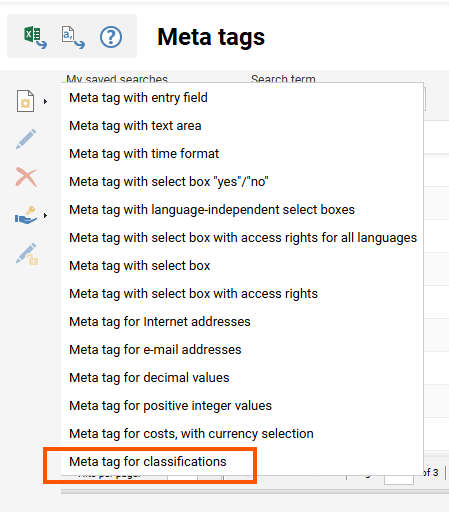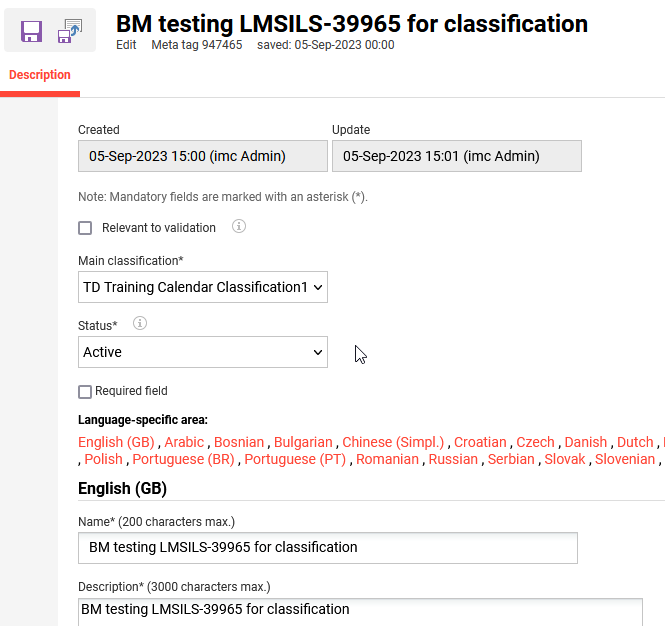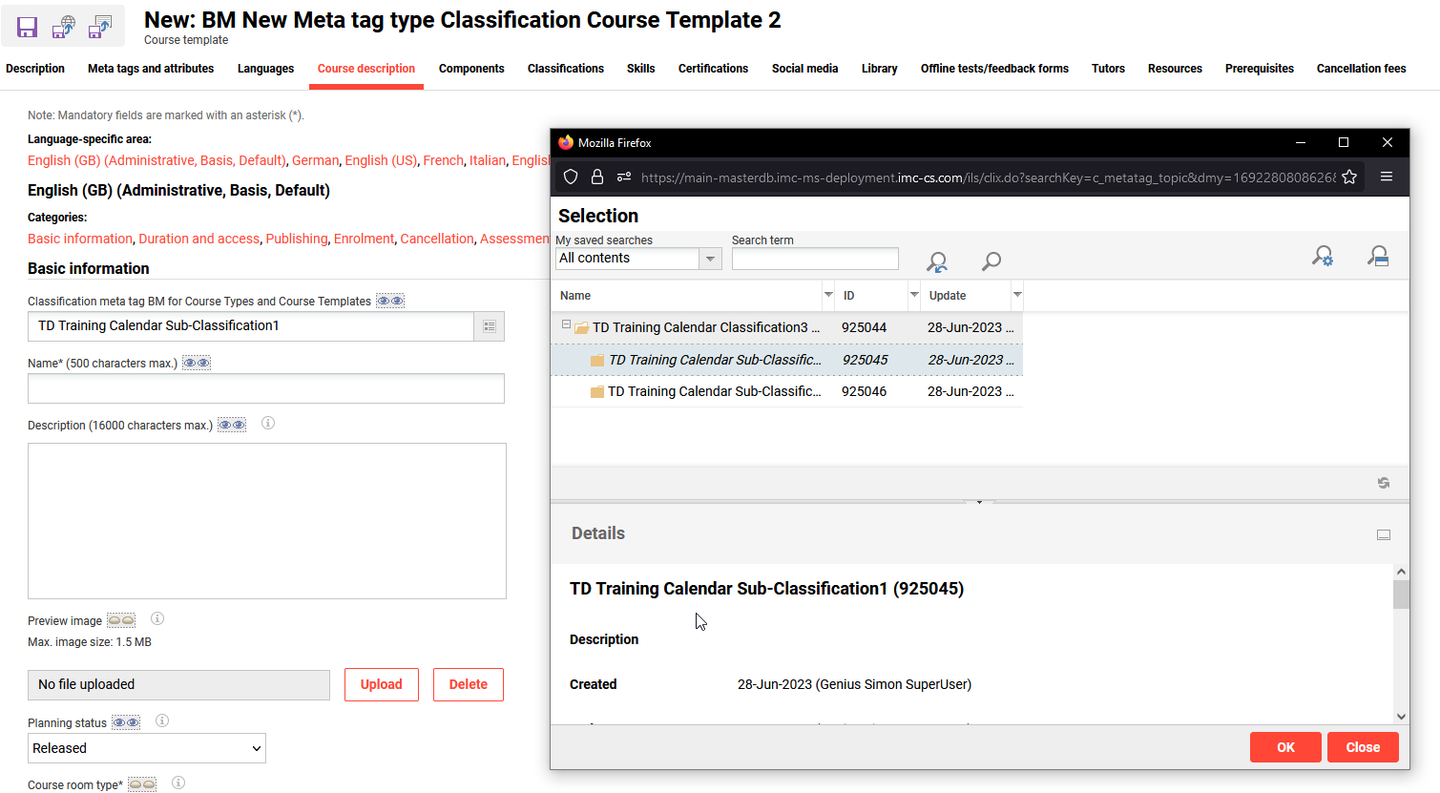Meta Tag Type: Classification
What is the Meta Tag Type "Classification” Module?
Classifications offer the possibility to relate content across the platform.
Filter and search content in backend or frontend (catalogue) based on classifications
Add content (e.g. test questions to tests) based on classifications
Allow learners to browse content based on interests (which are derived from classifications) and receive further content recommendations.
Classifications are now possible for course types, course templates, learning path types, learning path thanks to the newly implemented “classification” meta tag.
Benefits
The classification meta tags offer a wide range of benefits, from efficient content organization and retrieval to personalized learning experiences for users. They contribute to a more effective and user-friendly educational platform.
Configuration
A. New Meta Tag
open the Meta tag manager
click to create a new "Meta tag for classifications"

Fill in the necessary fields: select root node, status and give a name/description for the meta tag

Save and close
B. Add New Meta Tag Type to LP Type, LP Template, Course Type, Course Template
Navigate to Course Type navigation
Created a new course type and add the previously created new meta tag

Navigate to Course Template navigation
From course type, create a new course template
In the Course description tab of the new template, use the new meta tag to select a classification from the root folder

Known Limitations
When deleting classifications from a meta tag you have to wait for the auto-complete pop-up, otherwise, the edited object (the course) will not be updated in the background.
